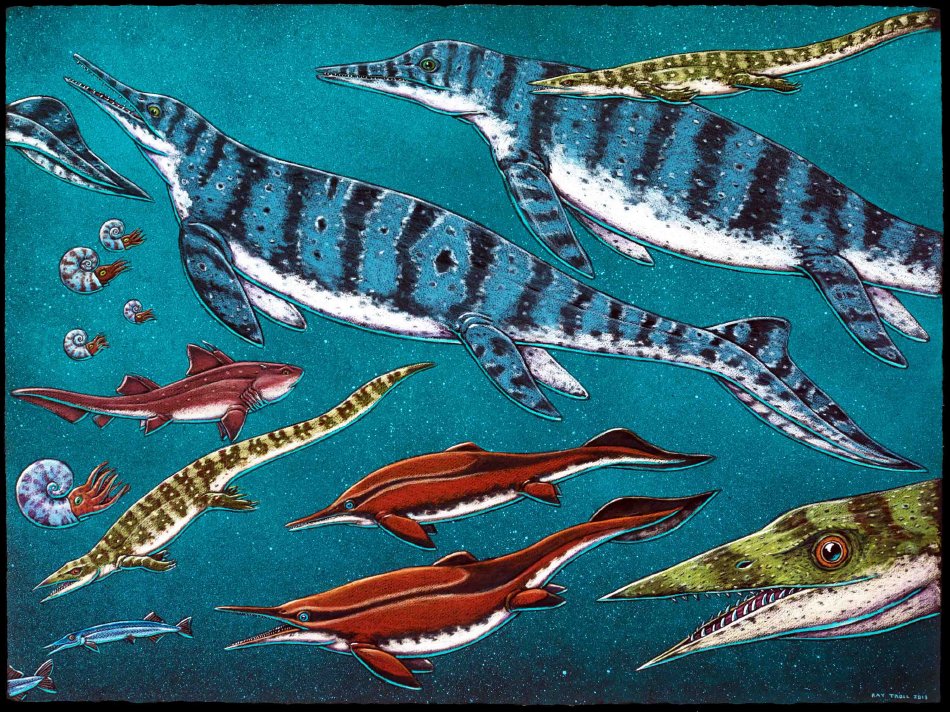Cruisin' the Fossil Coastline
Triassic Marine Reptiles
The fossilized remains of large marine creatures called ichthyosaurs have been unearthed in various locations around Alaska. Ichthyosaur is Greek for "fish reptile" - although they're not fish, but air-breathing reptiles. They look remarkably like modern-day dolphins, except their tails are vertical and they have pelvic fins.
Ichthyosaurs evolved during the Triassic Period, flourished in the Jurassic, and disappear from the fossil record at the end of the Cretaceous Period. Some species grew to incredible sizes. In the early 1990s a monstrously huge species called Shonisaurus sikanniensis was discovered on a riverbank in northern British Columbia. At 70 feet long, it is thought to be the largest marine reptile of all time-with its skull alone measuring 20 feet long.
In the last few decades, ichthyosaur bone beds have been found in the black marine shale of Southeast Alaska. In 1993, Ray Troll was part of the crew that found a small ichthyosaur, called Toretocnemus, on Gravina Island. In 2013, more ichthyosaur remains were found, including the ribs of a very large Shonisaurus.
In 2011, a small skeleton of a very rare marine reptile known as a thalattosaur was found in Triassic rock on an island near Kake, Alaska. With an unusual needle-sharp nose, it may be Alaska's most complete vertebrate fossil recovered to date.
Ichthyosaurs evolved during the Triassic Period, flourished in the Jurassic, and disappear from the fossil record at the end of the Cretaceous Period. Some species grew to incredible sizes. In the early 1990s a monstrously huge species called Shonisaurus sikanniensis was discovered on a riverbank in northern British Columbia. At 70 feet long, it is thought to be the largest marine reptile of all time-with its skull alone measuring 20 feet long.
In the last few decades, ichthyosaur bone beds have been found in the black marine shale of Southeast Alaska. In 1993, Ray Troll was part of the crew that found a small ichthyosaur, called Toretocnemus, on Gravina Island. In 2013, more ichthyosaur remains were found, including the ribs of a very large Shonisaurus.
In 2011, a small skeleton of a very rare marine reptile known as a thalattosaur was found in Triassic rock on an island near Kake, Alaska. With an unusual needle-sharp nose, it may be Alaska's most complete vertebrate fossil recovered to date.

